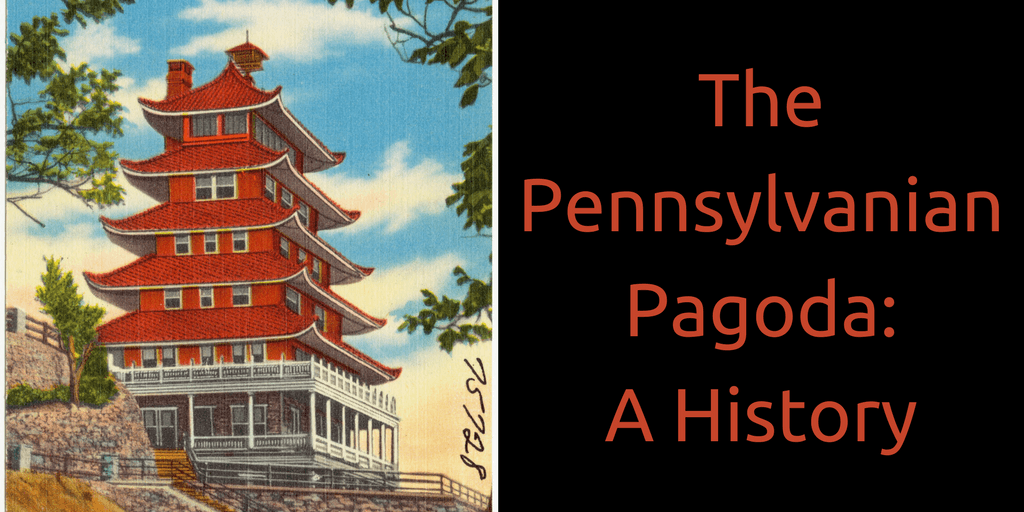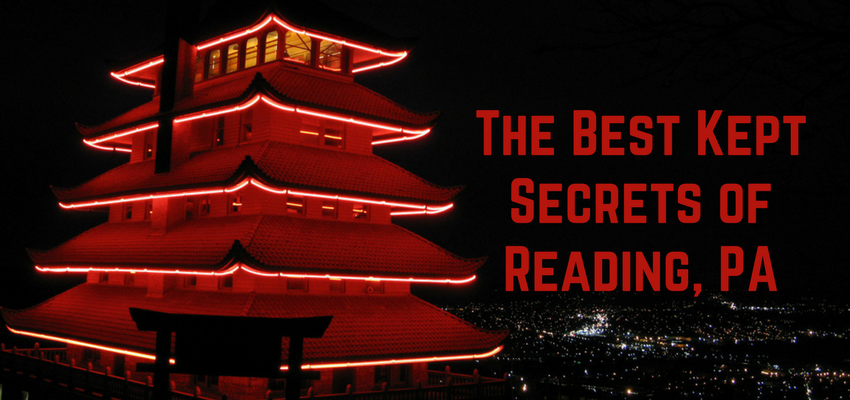
Peter Bubel+ by | Apr 8, 2017 | Blog, Peter Bubel, Uncategorized
Traveling is a beautiful thing, but if you’ve never ventured outside your neck of the woods, it can be a bit overwhelming, especially if you’re stepping foot onto a plane for the first time, too. There’s so much planning and preparation that goes into traveling that you might not even know where to begin! That’s why I’ve compiled this list of tips for first time travelers to help you navigate your trip with ease.
- Pack lightly.
- When you’ve never traveled before, it can feel like no matter how much you bring you still might have forgotten something. However, chances are that whatever you end up bringing, you’ve still probably brought too much. Bring only enough clothes for a few days with the understanding that, when they’re dirty, you’ll wash them and wear them again. You also don’t need more than a pair or two of shoes throughout your trip, which can save you some luggage space, too.
- Bring your camera.
- When you travel, you might be tempted to purchase tchotchkes and souvenirs to commemorate your trip. However, at the end of the day what’s really going to help you remember your vacation will be the pictures you take and the memories you’ve made. One of the best things you can bring with you when you travel is your camera, and extra batteries and memory cards won’t hurt either — you don’t want to have to decide what pictures to delete while trying to capture the perfect moment.
- Arrive at the airport early.
- If your vacation includes flying, you want to make certain that you leave yourself plenty of time before your flight to get there early, get checked in, and have a nice window before your flight departs. While it may be annoying sitting in the airport for an hour or two before you leave, it’s definitely far more annoying to miss your flight and have your plans ruined because you didn’t leave yourself enough time.
- Go off the map.
- When traveling to new places, especially in other countries, it can be comforting and easy to get stuck in the tourist traps and commercialized areas because they feel familiar. However, you decided to take a vacation and travel so you could experience new things and see foreign sights, so make sure you don’t forget to do that. Try eating somewhere off the grid that the locals enjoy. You’ll branch outside of your comfort zone, make memories, and might even find a new favorite dish!
Don’t forget to check out my upcoming post – First Time Traveling Mistakes to Avoid!

Peter Bubel+ by | Apr 6, 2017 | Blog, Peter Bubel, Property, Property Management, Reading, Real Estate
Contrary to popular belief, the life of a property manager isn’t as glamorous as you think it would be.
In fact, the daily tasks of a property manager change so often and are spread across so many areas that it’s hard to pin down the exact definition of what a property manager does. For simplicity’s sake, it’s best to just think this: property managers do it all.
Pick a hat, any hat.
There are several aspects of a property manager’s day that are very typical. These include the simple office tasks that anyone within the real estate and management spectrum would do: responding to emails, answering phone calls, putting out any fires (hopefully only figuratively speaking), and meeting the needs of clients. Essentially, however, a property manager is responsible for the daily operations of a real estate investment. This investment could be a single home, an apartment complex, or several complexes.
Property managers are expected to handle everything from setting or adjusting rent costs, to calming an angry tenant. A successful property manager must be able to multitask and handle many different climates of conversation, including the difficult task of evicting tenants. While it may seem very cut and dry, a manager’s day is always full of the unexpected, and they must be able to tactfully handle every situation thrown their way.
Aside from collecting rent checks and maintaining a friendly atmosphere for tenants, property managers have quotas to fill. There are always goals in any management level of a company. Filing taxes and managing a building’s budget costs are large parts of the job that often go unnoticed as they don’t directly deal with tenants. Managers also often have pressures to secure a certain number of tenants for any given building. This will require the set-up of many showings, the review of many applications, and running all of the credit and background checks on tenants to secure their approval for residency.
All in a day’s work.
What many may not realize is that there are an infinite number of reasons that someone would call, email and need their property manager. This requires managers to act professionally but also to have a good sense of humor in order to get through the day.
A recent article on the subject recounts the busyness of a manager, stating, “We are busy, even when the residents don’t see it.” This says a lot about a property manager’s responsibilities and about how much work goes on behind the scenes.
If you think about it, your property manager is your sole point of contact for when you lose your keys or get locked out of your building, discover a leaky pipe or broken air conditioner, and when you have to make a formal complaint about a neighbor. It’s important to be kind to your property managers, as they have a ton of tenants that are likely calling or emailing about the same things.
Most importantly, property managers have a passion for people. While they may be up to their eyeballs in paperwork and applications, a good manager will always carve out time to take care of a tenant’s needs. The next time you see your property manager running around, give them a wave and a smile – it’s very likely that they are headed to handle something unpredictable and unexpected.

Peter Bubel+ by | Apr 1, 2017 | Blog, PA, Pennsylvania, Peter Bubel, Reading, Travel
The Pennsylvanian Pagoda: A History
In the early 1900’s, a businessman by the name of William Abbott Witman Sr., hired a father and son contracting team to design and construct a 5-story luxury hotel in the likeness of a pagoda. The location for this pagoda wasn’t in Japan or China, nor was it in a predominantly Asian country. This large pagoda structure was actually to be built in the United States, atop the beautiful mountains of Pennsylvania, in a small town named Reading.
Curious and charming, this Pennsylvanian pagoda still stands today, and has brought joy and tourism to Reading, PA for over 100 years. Even with its true history shrouded in rumors and legend, the Pagoda is one of Reading’s most recognizable buildings, rising 886 feet above the city. Although residents are now incredibly fond of the unique structure, its journey to popularity is what makes the Pagoda so intriguing and worth exploring.
Origins of a Landmark Uncovered
On August 10, 1906, a simple headline gracing the Reading Eagle started it all: “Reading to Have Japanese Pagoda,” the paper read. As mentioned above, William Abbot Witman, Sr. was the man behind this construction. Amidst outcries that Witman’s stone quarry business was defacing portions of Mt. Penn, Witman decided to construct the Pagoda atop his quarry and restore the faith of the locals. The project wasn’t completely founded in a pure-of-heart fashion, however. Witman was actually a mayoral candidate, and with his quarry business closing due to the amount of complaints surrounding it, he also saw the Pagoda as a way to win favor with voters.
The inspiration for the design still remains a bit of a mystery. James and Charles Matz, the father and son team Witman hired to take on the Pagoda project, are said to have played a big part in the design of the Pagoda. Rumor has it that Charles Matz used a photograph he acquired while on a tour of duty in the far east as inspiration. With no real proof on record, others have claimed the building was designed from an image in a book about the Shogun dynasty. In fact, records obtained from the Historical Society of Berks County reference a postcard, only perpetuating rumors of the true inspiration.
A Change of Hands and a Change of Plans
Sadly, Witman’s hopes of a mountaintop resort were crushed when he was denied a liquor license, seemingly in a political move by the local Judge. With the absence of a liquor license, Witman was unable to successfully open the resort, and the Pagoda suffered a foreclosure by the Farmer’s National Bank.
It’s at this point of the story that things start to get even more interesting.
The director of that same bank, Jonathon Mould, was facing difficult circumstances as the bank was on the brink of severe losses. Mould decided to purchase the failed Pagoda and its 10 acres of land to help save the bank. A year later, Mould and his wife sold the property to the city of Reading for $1. The sale was seen as a gift to the city and as an opportunity to improve Reading’s parks and boulevards initiative.
The Pagoda was immediately put under construction with many of the improvement projects, including the planting of 10,000 trees and the addition of running water and electricity, lasting for the next several decades.
Wartime Speculation
With the country in the midst of World War II in the early 1940’s, all of the improvements came to an end. The Pagoda was neglected for some time and was under threat of demolition as many, biased against the Japanese from the war, wanted nothing to do with Japanese culture. A debate on the design origins began, and although parts of the Pagoda were considered a safety hazard because of neglect, the Pagoda was saved by a team of Berks Countians that wanted to see the Pagoda repaired.
To save the reputation and future of the Pagoda, rumors began surfacing that the design was of Korean origin. This helped to cloud the truth behind the Pagoda’s design, inherently keeping the building safe from demolition.
The Fate of the Reading Pagoda
To this day, the city of Reading continues to care for the Pagoda; equipping it with a gift shop and restoring the facade of the building. There are many mysterious things about the Pagoda that still go unanswered, including the apparent Buddhist origins of its massive bell. Only adding the appeal, these mysteries are what make Reading’s Pagoda one of a kind. Full of interesting history and placed upon a beautiful plot of acreage, the Pagoda of Reading, PA is a landmark that can still be enjoyed today and is certainly one not to be missed.
Peter Bubel+ by | Mar 4, 2017 | Blog, PA, Pennsylvania, Peter Bubel, Travel
When you consider all of the hubbub and sights to see all along the East Coast of the United States, Pennsylvania may not seem like it has much to offer. Sure, it’s home to metropolises like Philadelphia and Pittsburgh, but outside of those it’s mostly just farmland and Amish country, right? Well, that’s where you’re mistaken. Tucked within those 46,055 square miles are countless adventures to be had and sights to unfurl, both within the big cities and in the middle of nowhere. Take a look at some of the best travel destinations you can find within Pennsylvania’s cities and rural areas, and start planning a trip to one of them today!
Cities:
Philadelphia
Independence Hall
- If you want to witness an iconic piece of American history, look no further than Independence Hall. Not only does this building currently house the original Liberty Bell, in 1787 Independence Hall was where the United States Constitution was signed. You can view artifacts and pieces of American culture in this historic hall.
Citizen’s Bank Park
- Planning to visit Philadelphia between April and October? Why not consider catching a game at Citizen’s Bank Park to see the Philadelphia Phillies play baseball. The games are always fun, and the
Lincoln Financial Field
- If you have a couple hundred bucks lying around and you’re a football fanatic, your next trip to Philadelphia should include plans to see the Eagles play a game on their home turf.
The Mütter Museum
- This stop might not be one for the kids; the Mütter Museum is a collection of medical marvels and anomalies throughout time, most of which are equal parts horrifying and fascinating. Visitors can gaze upon exhibits like Einstein’s brain and John Wilkes Booth’s vertebrae in this collection of medical history.
Reading Terminal Market
- Located downtown, this indoor public market hosts more than a hundred vendors offering everything from local produce and fresh seafood to flowers and housewares – although the food is the biggest selling point. Stop by for lunch or take a few hours to explore it in its entirety.
Pittsburgh
Heinz Field
- You can’t talk about Pittsburgh without talking about the Pittsburgh Steelers, Pennsylvania’s other NFL team. If you’re planning on visiting Pittsburgh and you’re a fan of the Steelers, this stop is likely already on your list.
The Andy Warhol Museum
- American artist Andy Warhol was a leading force in the pop art movement in the United States, and this museum is a curation of his greatest works. It boasts a collection of “900 paintings, 100 sculptures, almost 2,000 works on paper, 1,000 prints, and 4,000 photographs.” Fans of his works will enjoy seeing them in person.
PPG Paints Arena
- Yet another sports venue, the PPG Paints Arena is home to the Pittsburgh Penguins, one of Pennsylvania’s two professional ice hockey teams. The team was founded in 1967, and holds 4 Stanley Cup victories: 1991, 1992, 2009, 2016.
Gettysburg
Battlefields
- Civil War buffs will have likely already visited this area, site of the largest, bloodiest battle of the American Civil War. Even though it lasted only three days, nearly 10,000 soldiers were killed and another 30,000 were injured during that time. Due to the number of casualties caused in such a small area, Gettysburg has also become famous as a hotbed for paranormal activity. There have been enough sightings over the years for some ghosts to have become iconic.
Monuments
- Woven into the history of the battlefields, Gettysburg is also home to numerous monuments and landmarks scattered around the surrounding area. There are statues and monuments constructed to honor numerous states and individuals, as well as historic landmarks like Devil’s Den or The Copse of Trees.
Lancaster
Lancaster City
- Dubbed by some as the next Brooklyn, this small city nestled inside its eponymous county is packed full of art, music, and history. Lancaster is the oldest inland city in America, founded in 1729, and served briefly as the capital city of Pennsylvania from 1799 to 1813. Now, it is home to numerous art galleries, local music venue The Chameleon Club, and more varieties of cuisine than you can count, including Ethiopian, Vietnamese, Mediterranean, Puerto Rican, and more.
Lancaster County
- Venture into a world where it seems as though time stands still by visiting “Amish Country” in the heart of Lancaster County. Visit one of the countless farmer’s markets, vegetable stands, or fruit stalls during the summer, and check out the amazing homemade quilts to keep you warm on the coldest winter nights. Chances are you’ll drive right by a number of horses and buggies as they make their way down the streets.
Hershey
Hersheypark
- For a day packed with thrills and chills, Hersheypark is your one-stop shop. The park is home to 13 different roller coasters; the Storm Runner is a hydraulic powered coaster that goes from 0 mph to 72 mph in just 2 seconds and Fahrenheit has a 97 degree drop that actually doubles back under itself, just to give you an idea. Hersheypark is also home to the Boardwalk, a water park within the amusement park that’s included in the price of admission and features numerous slides, rides, and aquatic jungle gyms.
Hershey’s Chocolate World
- Chances are that at some point in your life you’ve eaten (or at least seen) Hershey’s chocolate. See where it was born with a trip to the sweetest place on earth: Hershey’s Chocolate World. You can meet the candy mascots, design your own candy bar, and take a tour to see how Hershey’s produces all of its delicious candy. As a bonus, you get a free candy bar after the ride.
Other Attractions:
Fallingwater
- Also known as the Kaufmann Residence, this architectural marvel was made possible by the most famous architect in America: Frank Lloyd Wright. Fallingwater is built overtop of a waterfall and took three years to complete. The building is now a National Historic Landmark, revered for its unique placement and aesthetic.
Pennsylvania Grand Canyon
- Located in the middle of the Tioga State Forest, the Pennsylvania Grand Canyon is officially known as the Pine Creek Gorge. It runs for 45 miles along the Allegheny Plateau throughout Northern Pennsylvania with depths reaching up to 1,500 feet.
Knoebels Amusement Resort
- If you ever find yourself in the area between Harrisburg and Williamsport, chances are that you’re not too far from the country’s largest free admission amusement park: Knoebels. Opened in 1926, this little treasure found in Elysburg, PA is equal parts park and campground, with people flocking from all over the country to take advantage of the free admission. Park-goers must acquire tickets or an all-day handstamp to ride the rides.

Peter Bubel+ by | Feb 21, 2017 | Blog, PA, Pennsylvania, Peter Bubel, Reading, Travel
Reading, PA is located in southeastern Pennsylvania, about 47 miles from Philadelphia, the largest city in Pennsylvania. The town acts as the county seat of Berks County and boasts of having a population approaching 99,000. The city was established in 1733 at the current intersection of the Schuylkill River and the East Penn Lebanon Valley. During the American Revolution, Reading was a leading producer of iron ore, which was used to make cannons, rifles and ammunition for the Washington troops. Agriculture, especially dairy and beef production are vital industries in the area.
Some of the best hidden secrets in Reading, PA include the Reading Public Museum, Santander Arena, Berks County Heritage Center, Berks Jazz Fest, Balloon Rides, Mid Atlantic Air Museum and the Reading Pagoda. The high standing Pagoda is located atop Mt. Penn and includes a café and a gift shop. The building has stood for over 100 years and remains the greatest attraction in the city. The Pagoda is preserved and managed by the Foundation for the Reading Pagoda and is open to the public on Saturday and Sunday from 12:00pm to 4:00pm.
Berks Jazz Festival is an annual, 10 day jazz festival that takes place during spring throughout the Greater Reading area. The other attractions revolving around the festival include scheduled public events, dining and shopping. The Santander Arena and Santander Performing Arts Center is located at the city’s downtown. The venue offers state-of-the art entertainment throughout the year for people of all ages. The events that take place here include concerts, family shows, comedy and sporting events. Another captivating event in Reading is the daily balloon rides by the US Hot Air Balloon Team.
The exhilarating air rides take place over the beautiful Schuylkill River Valley. The Mid-Atlantic Air Museum that is located at 11 Museum Drive operates, preserves, restores historical aircrafts from various ages. The collection of includes bombers, transporters and military crafts. The Reading Public Museum is a major educational and artistic resource with numerous attractions for kids and adults. The attractions include natural science exhibition, art galleries, a planetarium and arboretum. The museum is located on the busy 500 Museum road in Reading.
The real estate market in Reading, PA is once again thriving after the shock of the 2008 economic crisis. According to Trulia.com, the median sales price for homes in Reading stood at $113,450 between November 2016 and February 2017. The market is replete with a wide range of housing units, including townhouses, detached houses, mobile homes, and in-unit structures. The Average price per sq ft was $75 during the same period. The number of residents who are homeowners stands at 66% while the median household income is $45,700.

Peter Bubel+ by | Jan 13, 2017 | Blog, Peter Bubel, Travel
It’s a new year, and with it comes resolutions for how to make this year a great one for ourselves. Why not make it an adventurous one as well by adding travel to your list of resolutions for 2017?
Travel is an important part of life for so many reasons. Not only does it provide us enjoyment and entertainment as we journey from one place to the next, it also provides us with invaluable learning experiences that we would be unable to find anywhere else. Absorbing new cultures and meeting new people helps us to expand our worldview and cean even make us more understanding and accepting of unfamiliar things. Travel not only better us as individual but as a society as a whole. Get out there, get exploring, and get learning in 2017 with these top travel destinations on which to set your sights.
Canada
- Take a trip to the Great White North this year and join the country for two very special anniversaries. Not only is the entire country celebrating the 150th anniversary of its Confederation, the Québec city of Montreal will be celebrating its 375th birthday in December. Be a part of history and join in the momentous celebration of a nation.
Cuba
- After more than 50 years, relations between Cuba and the United States were finally repaired in July of 2015, reopening travel between the two nations. Step back in time to the 1950s and see streets filled with cars half a century old in a country rich with culture as you walk along the historic streets in places like Havana. Keep an eye out for flash sales from airlines on tickets to Cuba this year to make your trip even easier.
Botswana
- If you’ve ever wanted to explore an African safari and live out real-life scenes from “The Lion King,” Botswana is probably worth marking on your map. Opening this spring is the Duba Plains Camp; at the center of this 77,000 acre area of the Okavango Delta, visitors will stay in a luxury tent camp and be able to observe elephants, lions, and zebras alike up-close in their natural habitats.
There are so many places to go and things to do that this list couldn’t even begin to cover them all, so get out there and find them for yourself! It doesn’t matter where you go this year, the important thing is that you travel!





